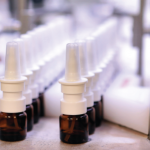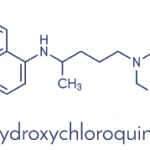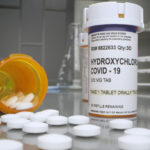The 305 patients who were enrolled—all of whom had been prescribed hydroxychloroquine (HCQ) at least two months before and were having a disease flare, according to the SELENA-SLEDAI Flare Index—had their HCQ blood levels tested; answered the Medication Adherence Self-Report Inventory questionnaire; and were assessed for drug adherence by a physician using the Visual Analogue Scale.
Blood tests revealed that 18.5% of patients were severely nonadherent; they had less than 200 mg/mL in their system or undetectable levels of desethylchloroquine (DCQ) (a metabolite of HCQ), which suggested they only very recently had resumed treatment.
About 40% of patients were found to be nonadherent using the questionnaire. Some patients with undetectable HCQ and DCQ still had questionnaire scores of 80%, which suggested to researchers that some patients were reluctant to admit severe nonadherence, perhaps even to themselves.
The researchers determined that 40.3% of patients were nonadherent, defined as taking less than 80% of their HCQ in the previous month. Younger age and the absence of steroid use were predictors of nonadherence, whether it was determined by blood levels, questionnaire answers or physician assessment, the researchers found.
“Nonadherence can be missed by the physician and underreported by the patient, strongly suggesting the usefulness of blood assays in this setting and the value of using different methods to increase the likelihood of diagnosing nonadherence,” said Nathalie Costedoat-Chalumeau, MD, PhD, professor of internal medicine at Cochin University Hospital in Paris, who presented the findings.
Researchers also presented findings that detailed the effects of anifrolumab, an antibody that targets the type 1 interferon receptor, on specific symptoms experienced by patients with SLE.3 The drug was found safe and effective overall in the phase 2 MUSE trial, results of which were also presented at the ACR/ARHP Annual Meeting. About 300 patients with moderate to severe active SLE received either 300 mg or 1,000 mg of anifrolumab, or placebo, every four weeks.
The current report broke this down to individual symptoms of rash, alopecia and arthritis. Patients with high interferon signals had significant improvements in rash, alopecia and arthritis with the best results for the patients on the 300 mg dose.
“Single-organ assessments showing a range of effects on arthritis and skin worked well to demonstrate the treatment effect,” said Joan Merrill, MD, of the Oklahoma Medical Research Foundation in Oklahoma City. “These data contribute understanding of the impact of anifrolumab on individual lupus features and suggest benefits of continuous variables in outcome measures to inform interpretable trial designs.”


